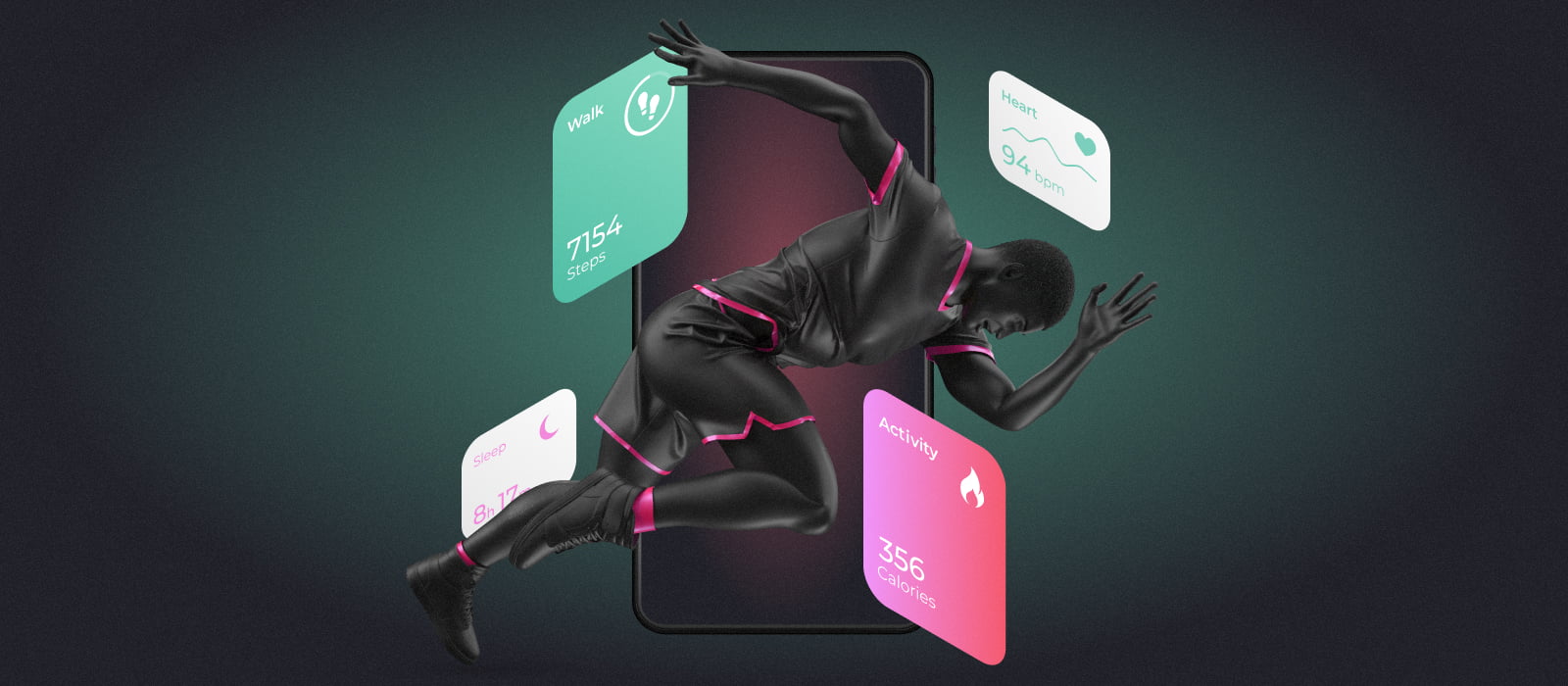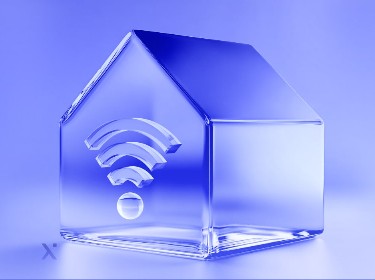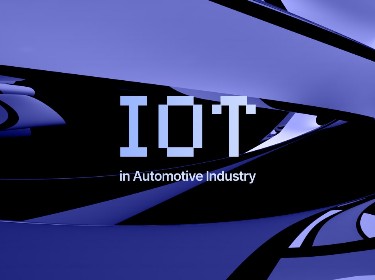Health apps have transitioned from being nice-to-have to essential tools for our well-being. Recognizing this trend, businesses are quickly investing in the development of health apps to meet consumer demand and maintain their edge in a competitive market.
Recent data indicates that the global mobile health apps market is projected to soar to $861.40 billion by 2030.
Given such anticipated exponential growth, investing in health app development appears to be a promising avenue for businesses keen on making a significant impact and bolstering their profits.
However, creating a standout health monitoring app demands meticulous attention to detail.
Fortunately, the experts at PixelPlex possess the winning formula.
In this article, we will provide a behind-the-scenes look and share useful insights from our real-world project to help you build a top-tier health monitoring app.
Let’s start!
What is a health monitoring app and why are they important?
A health monitoring app is a digital tool designed to track, analyze, and offer insights into an individual’s health metrics and wellness activities.
These apps can cover a range of health aspects, from physical activity and heart rate to sleep patterns, dietary intake, and beyond.
Health monitoring applications offer numerous general advantages for both users and the broader healthcare ecosystem, namely:
Heightened patient safety
Providing users with immediate access to their comprehensive health records helps mitigate risks associated with medical oversights.
This is particularly crucial when patients are on multiple medications or undergoing concurrent treatments, as it aids in minimizing potential medical discrepancies.
Cost-effectiveness
Health monitoring apps facilitate early detection and intervention. Addressing potential health issues at their nascent stages often allows patients to avoid complications that lead to extensive treatments, thereby mitigating the long-term financial burdens associated with chronic health conditions.
Promotion of holistic health and wellness
Health monitoring applications act as active motivators in a user’s journey towards enhanced health.
By providing tailored insights, actionable recommendations, and regular reminders, they become instrumental in guiding users toward adopting and maintaining healthier lifestyles.
Dive into our comprehensive blog guide on enabling digital transformation in the medical sector
Introducing Patientory — a blockchain-based health monitoring application delivered by PixelPlex
Our client, a forward-thinking health-tech company, envisioned a solution that would enable users to effectively monitor their health status, providing them with actionable, data-driven insights for enhanced health outcomes and well-being.
Passionate about the potential of blockchain technology, they also aspired to harness its robust capabilities to ensure increased transparency and security in the storage of medical data.
To actualize this pioneering vision, the client engaged the expertise of our PixelPlex software development team.
In strict alignment with the client’s specifications, our team crafted Patientory — a blockchain-powered mobile health and wellness application. This tool grants users unparalleled control over their health data, facilitates comprehensive well-being monitoring, and offers tailored incentives designed to enhance health outcomes.
Armed with the invaluable experience gained from this venture, we are now keen to share useful insights on designing a standout health monitoring application that ensures both business success and user satisfaction.
Developing an app? Boost its potential and elevate its impact with our professional IT consulting services. Tap into expert guidance today
Key features and functionalities of a health monitoring app
![]()
A health monitoring application endeavors to allow users to consistently track their health metrics while also inspiring, motivating, and guiding them towards elevated well-being. Therefore, the meticulous choice and integration of pertinent features into the application become paramount.
In our specific project, our ambition extended beyond simply crafting an app. We aimed to architect a mobile health companion that provides users with invaluable insights, recommendations, and support in navigating their physical and mental well-being, ultimately directing them towards a richer life experience.
Leveraging our expertise and thorough preliminary research into the ever-evolving needs, desires, and inclinations of potential users, we determined that a contemporary health monitoring application should encompass the following features to genuinely fulfill its primary objectives:
Tailored nutrition guidance
Informed by modern nutritional science and best practices, a health monitoring application should offer individualized nutrition plans. This can provide users with precise recommendations on calories, proteins, fats, and carbohydrates, facilitating a more personalized nutritional journey and reflecting each individual’s unique health profile.
Fitness activity recommendations
Taking into account diverse fitness inclinations, an app should provide personalized recommendations on a range of physical activities, such as running, cycling, or even yoga. These suggestions, complete with specified durations, will assist users in tailoring their fitness routines, ensuring they receive a balanced and consistent physical workout.
Wellness plan for holistic health
Health transcends just the physical dimension, which is why an effective health monitoring app should provide a tailored wellness blueprint, concentrating on facets like sleep, relaxation, and recreational pursuits. This ensures users maintain a harmonious balance between their physical, mental, and emotional health, leading to a more comprehensive sense of well-being.
Comprehensive health metrics dashboard
A robust health monitoring app should feature an intuitive dashboard that logs and traces vital health metrics, including heart rate, body mass index (BMI), and more. This not only aids users in analyzing their personal health trajectory but also streamlines enriched dialogues with healthcare practitioners.
Disease-specific tracking
Given the dynamic nature of global health scenarios, health monitoring apps need to incorporate specialized health data tracking utilities.
For instance, features such as a COVID-19 tracker empower users to stay abreast of their vaccination schedules and potential symptoms, ensuring they are always well-informed and primed for proactive health decisions.
Hydration notifications
Consistent hydration is fundamental to health, so an efficient app should possess a customizable water intake reminder mechanism, nudging users towards maintaining their daily hydration goals, which is indispensable for overall health.
Visual progress diary
By allowing users to maintain a photo diary, they can visually map out their health and fitness journey. Regular image snapshots can serve as a motivating factor, highlighting the palpable progress achieved and fostering a continued dedication towards health aspirations.
Create your own powerful and feature-rich solution with our custom software development services
Core technological components for a comprehensive health monitoring app
Designing a top-tier health monitoring app requires more than just good intentions.
To truly resonate with today’s users and ensure both efficiency and security, it is essential to carefully incorporate specific technological elements to make a health app stand out and ensure that it is both powerful and trustworthy.
Let’s further examine these main components.
Unified health record interface with a security focus
A health monitoring app should seamlessly unify medical records from various healthcare providers so that users can quickly access their consolidated health data.
However, while convenience is crucial, the security and trust of the user must be paramount. This calls for stringent authentication measures, such as user credential verification and KYC procedures, to guarantee utmost data privacy and security throughout their interaction with the app.
Dedicated user data storage
Given the sensitive nature of health data, a health app should prioritize dedicated storage solutions to ensure that the data is not only stored securely but is also transmitted safely during any interaction.
In addition to this, implementing caching mechanisms and optimized database queries will bolster the app’s performance and allow for swift data access and retrieval.
Discover another technological breakthrough and see how telemedicine technology can elevate the healthcare sector to a whole new level
Integrated financial ecosystem for seamless transactions
An integrated wallet function in a health monitoring app empowers users to conveniently manage an in-app balance while promoting instant and seamless payments, whether for premium offerings or other health-associated services.
Moreover, present-day mobile health apps need to be attuned to the expansive healthcare ecosystems, so it makes sense for a mobile app development company to consider integrating health insurance functionalities that would allow users to easily activate and oversee their care plan subscriptions from within the app.
HIPAA standards compliance to fortify trust
Prioritizing user data privacy is non-negotiable in health applications.
Adhering to HIPAA (Health Insurance Portability and Accountability Act) showcases to users the unwavering dedication to safeguarding their medical records.
In doing so, businesses ensure regulatory compliance and build a foundation of deep trust, instilling in users the confidence that their health data is meticulously protected and managed.
Reward mechanism for enhanced user engagement
To elevate user commitment and motivate continuous health improvement, a health monitoring app should feature a dynamic reward mechanism.
By infusing elements of gamification into a health monitoring app, users are more inclined to stay on track, celebrate small victories, and remain inspired to achieve overarching wellness objectives.
Explore how PixelPlex developers delivered this blockchain-powered mobile fitness app with a sophisticated rewards mechanism
Why use blockchain in health monitoring apps?
In the development of our health monitoring solution, we strategically integrated the blockchain network to underpin the application.
The rationale behind this decision was multifaceted.
First of all, blockchain ensures an uninterrupted and highly secure flow of health information across various stakeholders, be it clinics, hospitals, researchers, or patients. By consolidating these entities within a singular, transparent digital ecosystem, it greatly enhances the efficiency and clarity of communication.
Another paramount benefit of leveraging blockchain technology lies in its robust encryption capabilities, especially during the transfer of sensitive healthcare data. This fortified layer of security significantly mitigates the risk of data breaches and ensures that user data remains inviolate.
Beyond the realms of security and compliance, the blockchain infrastructure also lays the groundwork for the integration of tokenomics within the app. This functionality offers a unique opportunity for enhancing user engagement and satisfaction.
So, as you see, integrating blockchain into health monitoring applications not only fortifies data security but also amplifies user engagement, making it an invaluable asset in the modern digital health landscape.
See how our professional blockchain development services can help your business get ahead
How to create a robust health monitoring app: PixelPlex’s step-by-step guide
![]()
Before diving into the development of the Patientory health monitoring application, our dedicated team of consultants and developers convened to discuss and outline the steps necessary for delivering a top-notch solution.
After numerous discovery sessions, we conducted research and development services and crafted a comprehensive methodology, which enabled us to engineer a solution that not only met but also surpassed our client’s expectations.
Below, we will detail the phases and procedures that a business should consider when aiming to develop a thriving health monitoring application.
Step 1. Define the core objectives and conduct market research
Initiate the app development process with a clear vision.
So, for instance, in our experience with the Patientory app, the client’s initial and primary goal was to assist individuals worldwide in maintaining their physical and mental health and living happier and healthier lives.
Similarly, your app should have its own well-defined mission, whether it is emphasizing fitness, holistic wellness, chronic disease management, or any unique offering.
To accomplish this, you should conduct rigorous market research to understand current trends, identify potential competitors, and spot gaps in the existing market solutions.
Besides, to resonate with your target audience, gather firsthand insights from potential users through surveys, focus groups, and personal feedback sessions.
Step 2. Design an intuitive user interface and experience
Users of health apps seek solutions, not puzzles. This means that every design choice should reduce cognitive load and guide users effortlessly from one feature to another.
Provide a minimalist design, guaranteeing that every element, from buttons to menu items, is self-explanatory and easily accessible. Use harmonious color palettes that instill a sense of calm and trust, given the health-centered theme of the app.
Thus, by merging a user-centric UI with a seamless user experience, your app will become more than a tool, but rather an ally in the user’s health journey.
Transform your vision into intuitive and captivating digital experiences with our full-stack UI/UX design services
Step 3. Select a robust tech stack for the backend
For a health application, the backend is its backbone.
When selecting a database, prioritize security and scalability to adeptly handle the unique challenges of users’ health data, which can be a mix of structured and unstructured data.
The right technology stack should not only fit today’s requirements but also adapt to future changes. Thus, by making informed decisions in the beginning, you can ensure that your health monitoring application remains agile, secure, and efficient in the long run.
Step 4. Implement front-end code and ensure backend integration
When the foundational backend is set up, it is time to bring the previously designed user interface to life.
This phase primarily involves coding the front-end components and ensuring that they are fully integrated with your backend systems.
Another critical aspect to emphasize during this stage is the seamless communication between the two ends. Regularly validate real-time data exchanges, especially when it concerns essential health metrics, to guarantee precision and prompt responsiveness.
Step 5. Establish secure and efficient data management
Once you have achieved seamless integration between your front-end and backend systems, you should focus on secure and efficient data management to ensure that sensitive health metrics are not only stored securely but also retrieved and transferred both swiftly and safely.
Moreover, incorporating data processing techniques, such as caching, indexing, and batch processing, can effectively handle large data volumes without sacrificing speed or user experience.
Step 6. Undertake rigorous testing for quality assurance
Before introducing the application to the public, it is necessary to undertake comprehensive testing to guarantee data precision, consistent user experience, and the stringent protection of user data during storage and transfer.
Chiefly, incorporating feedback from beta testers can bring fresh perspectives, highlight real-world functionality, and unveil potential areas for enhancement.
Unlock unparalleled software quality and performance with our QA engineering & software testing services
Step 7. Engage users and evolve post-launch
Following the app’s debut, the commitment to its growth and refinement is continuous.
Engage consistently with users to capture invaluable feedback and discern their changing requirements. This input can spark iterative enhancements, optimize existing features, or inspire novel additions.
Given the ever-shifting nature of digital platforms and the intrinsic fluidity of the health sector, adaptation is pivotal. Therefore, ensuring that your app consistently aligns with current demands and anticipates future trends will solidify its relevancy and foster enduring user loyalty.
From monitoring to scheduling: check out our detailed guide to crafting top-tier patient scheduling software
Closing thoughts
The journey of developing a top-tier health monitoring app is intricate, yet rewarding and enlightening.
If you are feeling motivated to develop your own health app or enhance an existing one, lean on our PixelPlex healthcare software development services. Our expertise spans AI/ML, IoT development, AR/VR, blockchain, and data analytics, allowing us to infuse your healthcare solutions with the latest tech advancements.
Plus, with our expertise in iOS app development and Android app development services, we can ensure your health app reaches a wider audience and delivers a top-notch user experience.
Your idea, backed by our multifaceted expertise, could be the next beacon in healthcare technology.
So, let’s innovate, create, and set new benchmarks together.




